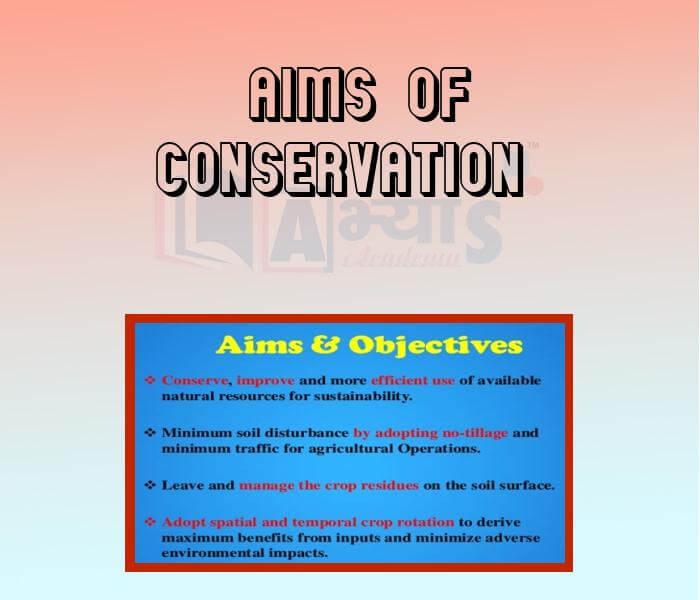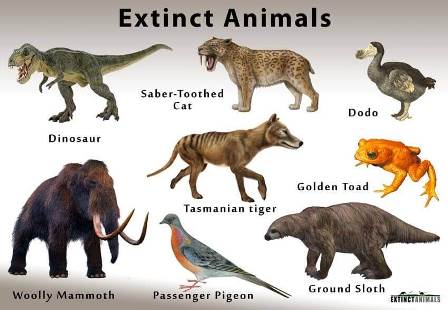Aims of Conservation











Aims of Conservation
To conserve and to maintain the habitats of plants and animals and prevent their extinction damage to the food chain.
The environmentalists being aware of the importance of forests are constantly conserving the forests. This will conserve all the plants, animals and microorganisms. Forests being renewable resources will continuously supply of useful plants and animals, if used properly.
A threatened species is a native species that is at risk of becoming endangered in the near further. A threatened species may have a declining population or be exceptionally rare. Like endangered species, the cause of its decline is variable, but may be due to threats such as habitat destruction, climate change, or pressure from invasive species.
International Union for Conservation of Nature (IUCN) a natural resources:
Works towards assessing the global conservation status of plants and animal species. It maintains a comprehensive list shown as IUCN Red list of threatened species. The use of this red list are:
Red Data Book : It is the state document established for documenting rare and endangered species of animals, plants and fungi as well as some local sub - species that exist with in the territory of the state or country. This book provide central information for studies and monitoring programmes. Species are classified into different categories of perceived risk. Red Data Book has pink pages for critically endangered species.
Threatened Species: A threatened species is a native species that is at risk of becoming endangered in the near further. A threatened species may have a declining population or be exceptionally rare. Like endangered species, the cause of its rarity is variable, but may be due to threats such as habitat destruction, climate change, or pressure from invasive species.
Extinct Species : Dinosaurs died and gradually disappeared from earth because they are not able to reproduce and adapt to climate changes. When species are unable to compete with other organsims, and no longer exist on earth then such species are called extinct species.

Extinct in wild : Species whose members survive only in captivity or as artificially supported populations far outside their historical geographic range (like in ZOO).
Exotic Species : An exotic species is any species intentionally or accidentally transported and released by man into an environment outside its present range. These plant and animal species are considered to be among the most servere agents of habitat alteration and degradation.
.jpg)
Lion tailed macaque
Critically endangered (CR) : Species that posses extremely high risk of extinction as a result of rapid population declines of 80 to more than 90 percent over the previous 10 years (or three generations) or we can say that the current population size of fewer than 50 individuals over all world.
Endangered (EN) : Species that posses extremely high risk of extinction as a result of rapid population declines of 50 to more than 70 percent over the previous 10 years (or three generations) or we can say that the current population size of fewer than 250 individuals over all world.
Vulnerable Species : Vulnerable species are those species that already exist in low number and are likely to move into endangered category in the near future, if casuals factors such as habitat destruction , over-exploitation and other environmental disturbances, continues over a period of time.Species that posses extremely high risk of extinction as a result of rapid population declines of 30 to more than 50 percent over the previous 10 years (or three generations) or we can say that the current population size of fewer than 1000 individuals over all world.
Rare Species : Rare species includes those species whose population in the world is very small. So if they are not protected then they might fall into the category of vulnerable or endangered species.
Endemic Species : Endemic species are those species of plants and animals that are found exclusively in the particular area and no where else in the world.
Near Threatened (NE) : Species that are close to becoming threatened or may meet the criteria for threatened status in the near future.
Least Concern(LC) : Species that are abundant after careful assessment.
Study the given table regarding different species and their status. Select the correct option for P - S.
| |||||||||||||
| Right Option : C | |||||||||||||
| View Explanation | |||||||||||||
Dodo is a ____________ | |||
| Right Option : B | |||
| View Explanation | |||
____________ is the symbol of our National Heritage | |||
| Right Option : C | |||
| View Explanation | |||
Students / Parents Reviews [20]
It was good as the experience because as we had come here we had been improved in a such envirnment created here.Extra is taught which is beneficial for future.

Eshan Arora
8thAbhyas institute is one of the best coaching institute in the vicinity of Ambala Cantt area. The teachers of the institute are well experienced and very helpful in solving the problems of the students.The good thing of the institute is that it is providing extra classes for the students who are w...

Aman Kumar Shrivastava
10thI have spent a wonderful time in Abhyas academy. It has made my reasoning more apt, English more stronger and Maths an interesting subject for me. It has given me a habbit of self studying

Yatharthi Sharma
10thMy experience with Abhyas is very good. I have learnt many things here like vedic maths and reasoning also. Teachers here first take our doubts and then there are assignments to verify our weak points.

Shivam Rana
7thWe started with lot of hope that Abhyas will help in better understnding of complex topics of highers classes. we are not disappointed with the progress our child has made after attending Abhyas. Though need to mention that we expected a lot more. On a scale of 1-10, we would give may be 7.

Manya
8thThe experience was nice. I studied here for three years and saw a tremendous change in myself. I started liking subjects like English and SST which earlier I ran from. Extra knowledge gave me confidence to overcome competitive exams. One of the best institutes for secondary education.

Aman Kumar Shrivastava
10thAbhyas is good institution and a innovative institute also. It is a good platform of beginners.Due to Abhyas,he has got knoweledge about reasoning and confidence.My son has improved his vocabulary because of Abhyas.Teacher have very friendly atmosphere also.

Manish Kumar
10thThird consective year,my ward is in Abhyas with nice experience of admin and transport support.Educational standard of the institute recumbent at satisfactory level. One thing would live to bring in notice that last year study books was distributed after half of the session was over,though study ...

Ayan Ghosh
8thIt was a good experience with Abhyas Academy. I even faced problems in starting but slowly and steadily overcomed. Especially reasoning classes helped me a lot.

Cheshta
10thMy experience with Abhyas academy is very good. I did not think that my every subject coming here will be so strong. The main thing is that the online tests had made me learn here more things.

Hiya Gupta
8thWhen I have not joined Abhyas Academy, my skills of solving maths problems were not clear. But, after joining it, my skills have been developed and my concepts of science and SST are very well. I also came to know about other subjects such as vedic maths and reasoning.

Sharandeep Singh
7thBeing a parent, I saw my daughter improvement in her studies by seeing a good result in all day to day compititive exam TMO, NSO, IEO etc and as well as studies. I have got a fruitful result from my daughter.

Prisha Gupta
8thUsually we see institutes offering objective based learning which usually causes a lag behind in subjective examinations which is the pattern followed by schools. I think it is really a work of planning to make us students grab the advantages of modes of examination, Objective Subjective and Onli...

Anika Saxena
8thMy experience with Abhyas Academy has been very good. When I was not in Abhyas whenever teacher ask questions I could not speak it confidently but when I came in Abhyas, my speaking skills developed and now I am the first one to give the answer of teachers question.

Upmanyu Sharma
7thIt has a great methodology. Students here can get analysis to their test quickly.We can learn easily through PPTs and the testing methods are good. We know that where we have to practice

Barkha Arora
10thAbout Abhyas metholodology the teachers are very nice and hardworking toward students.The Centre Head Mrs Anu Sethi is also a brilliant teacher.Abhyas has taught me how to overcome problems and has always taken my doubts and suppoeted me.

Shreya Shrivastava
8thA marvelous experience with Abhyas. I am glad to share that my ward has achieved more than enough at the Ambala ABHYAS centre. Years have passed on and more and more he has gained. May the centre flourish and develop day by day by the grace of God.

Archit Segal
7thIn terms of methodology I want to say that institute provides expert guidence and results oriented monitering supplements by requsite study material along with regular tests which help the students to improve their education skills.The techniques of providing education helps the students to asses...

Aman Kumar Shrivastava
10thAbhyas is a complete education Institute. Here extreme care is taken by teacher with the help of regular exam. Extra classes also conducted by the institute, if the student is weak.

Om Umang
10thAbhyas Methodology is very good. It is based on according to student and each child manages accordingly to its properly. Methodology has improved the abilities of students to shine them in future.
